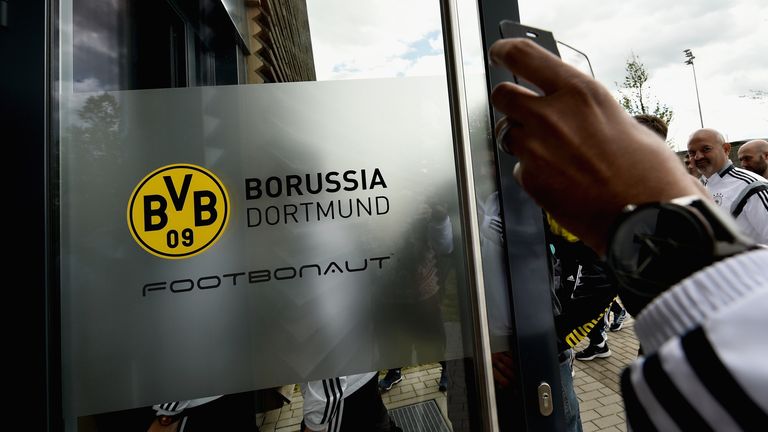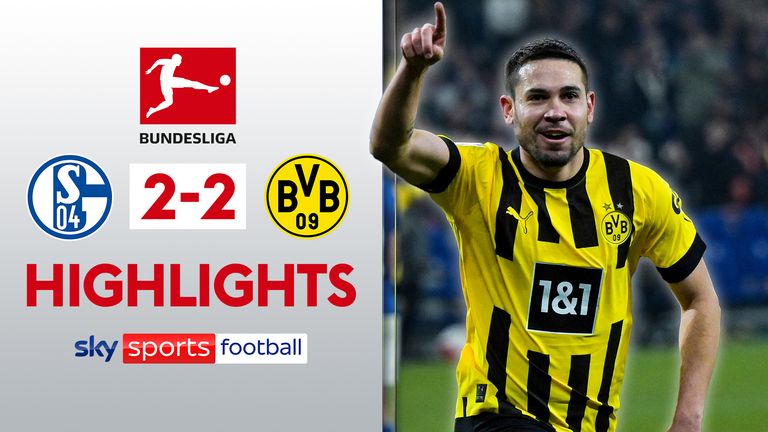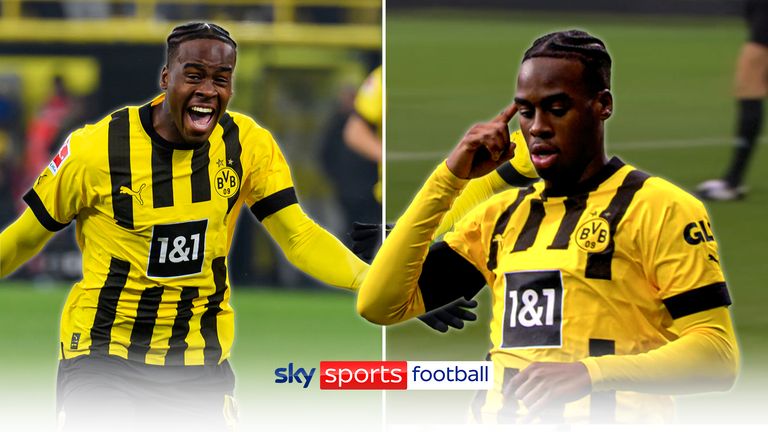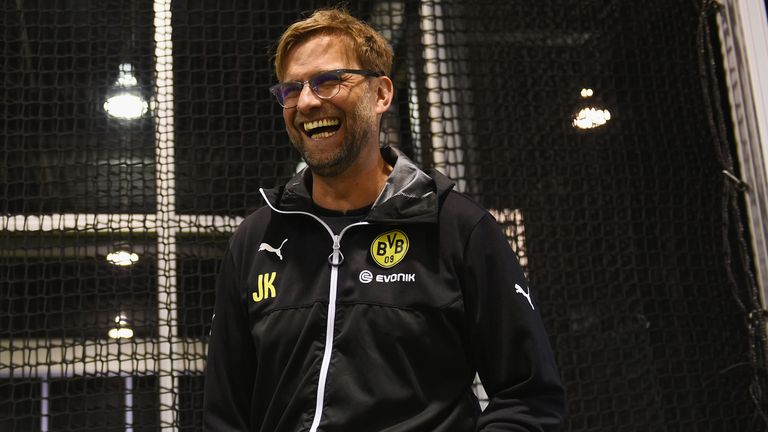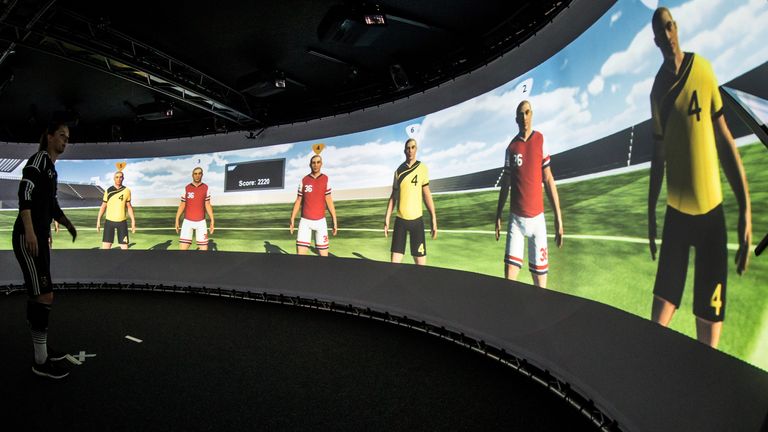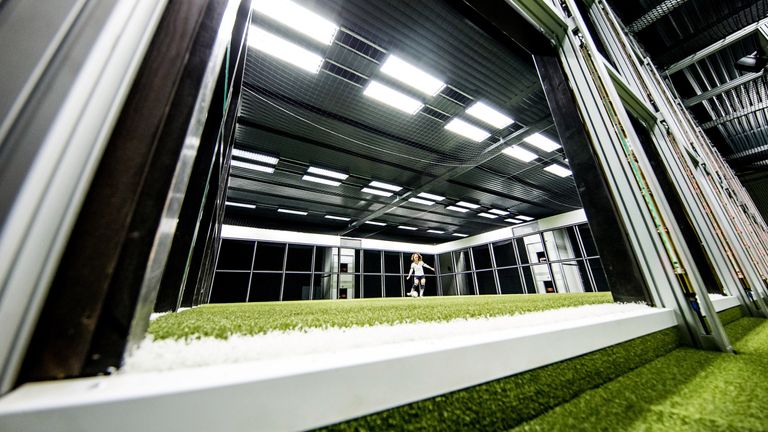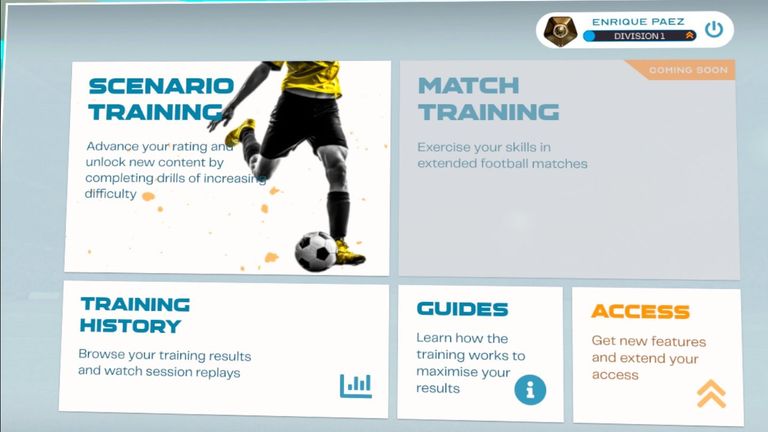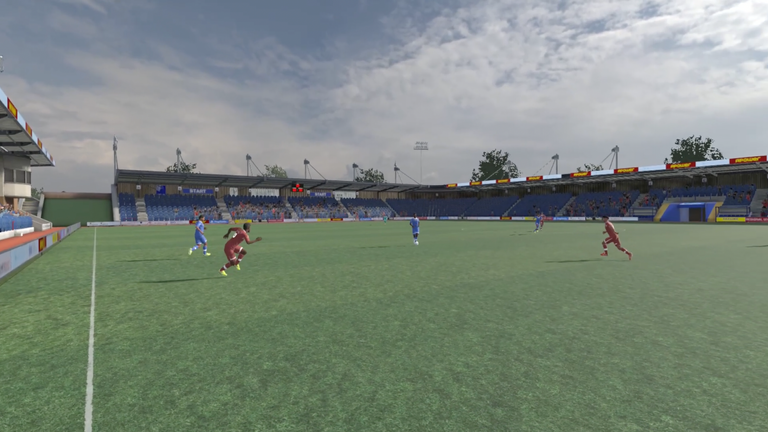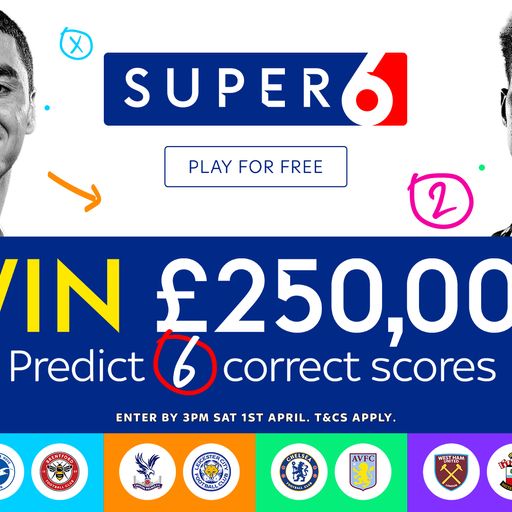Inside Borussia Dortmund’s academy: From the footbonaut to virtual reality – the innovation game explained
From the footbonaut to virtual reality software, Adam Bate goes inside Borussia Dortmund’s academy with their head of sports science to find out more about how the Bundesliga giants are innovating to help development the next generation of players
Saturday 1 April 2023 12:45, UK
The name of Borussia Dortmund conjures images of the awesome Yellow Wall that is the Sudtribune at Signal Iduna Park, home to Europe’s biggest attendances. In the industrial heartlands of Germany’s Ruhr, for many, Dortmund epitomises proper football.
Every academy player at BVB is reminded of these roots, taking a trip to the Yellow Wall upon signing. Traditions matter. But this is a place of innovation too, with a cutting-edge sports science department building the footballers of the future. Just whisper it.
"We are quite a traditional club," Paul Schaffran tells Sky Sports. "It is a very down-to-earth area. On the one side, the identity of the club is based on hard work and humility. On the other side, we are very technology focused."
Schaffran is the head of sports science at Dortmund's academy, based across the city from the stadium. A youthful 35, a tour of the grounds with the cap-wearing Schaffran is not quick - he stops to shake hands with every colleague, as is the custom at the club.
He is proud to be part of what happens here.
"We are a benchmark over the last decade when it comes to accompanying players on the final steps of their development into professional footballers. Players like Jadon Sancho, Gio Reyna, Christian Pulisic, Youssoufa Moukoko, Ansgar Knauff and many more.
"That has been the strength of Borussia Dortmund for years."
Under Lars Ricken, a scorer for Dortmund in the 1997 Champions League final and now head of the academy, this has become a finishing school for Europe's best talents. But what they really want to find is the next Mario Gotze, who joined at nine and went all the way.
"That is what Lars Ricken tells us every day must be our goal. Not only to bring in players at from other clubs but also to develop our own players from the youngest age groups. But it is hard to say a nine-year-old can be a Champions League player."
They are willing to innovate to make it happen. Perhaps you have heard of the footbonaut, a contraption housed inside its own building at the training ground for almost a decade now. "Jurgen Klopp was the guy who started that," says Schaffran. It has been a big success.
What might have been seen as a gimmick when introduced remains integral to the academy coaching at Dortmund, booked out daily between 4pm and 8pm as players build up their hours in contact with the ball. It is fired at them in at all angles. Reactions are tested.
"The emphasis is on perception, decision-making, working on the weaker foot. What pace is the ball coming at? What spin is on the ball? What angle is it coming at? It is about visual scanning and a clean first contact, and then it is the space that you can create.
"Let us say that you play five minutes in the footbonaut. That is 40 to 50 balls that you play. If they train three times per week for half an hour in the footbonaut, they will have more touches in there than they will have in the whole week in game situations."
As a player is put through his paces in the footbonaut, the attention is drawn to his boots. "There is a sensor on the foot, tracking the technical movement," Schaffran explains. "It tells you how many touches they have with each foot and the kicking speed."
The collection of this data has allowed Dortmund to develop benchmarks for their academy players. Not only can these be used to compare individuals but a series of tests help them to identify which areas each young player needs to focus on improving.
"We start our cognitive training at the age of eleven, looking at eye movements, perception, visual scanning. We have been focusing on this cognitive criteria for six or seven years now, so we have data on all of our players that we collect two or three times a year.
"Twice a year, for example, our players will go in the footbonaut and play 32 balls in a standardised setting. Sixteen on the right side and 16 on the left side. Sixteen in front and 16 behind. In the end, you can see how fast and precise they act in each area.
"We have an average score and we often see a big difference in perception between the right side and the left side. If their scanning is not good on one side then their reactions will not be as good on that side. Most of the time it is not about the technique."
There is a growing appreciation of the importance of scanning in football, a realisation that a player's awareness of what is around them can be the difference between good and great. It has led to Dortmund implementing a virtual reality tool to help train that.
The Be Your Best software is similar to the FIFA games but through the use of a VR headset is totally immersive, testing players' scanning ability in various situations. Since September, the first cohort of Dortmund academy players are using them to accelerate their learning.
"It is not just the number of scans but the timing of them," Schaffran explains. "For me, the timing of them is much more important than the number. If you let the players train on Be Your Best, they can get a feel for when they are able to do their scan.
"When the ball is free, when there has been a long pass from player A to player B, that is the right time for me to do a scan. The next question is where you are scanning. Is it the left shoulder or the right shoulder? Where is the blind spot?
"I talked with our U19 coach. He says that if a midfielder only looks over their left shoulder for years and years then it is pretty easy to stop them because they will never turn to their right because they are unable to get any information on that side.
"We need them to be flexible. A full-back might be playing in the centre in a few years, or the other way around, so it is important that they have no blind spot in terms of their scanning. It is important they can see what is happening on all sides of the pitch."
Many would argue that this is no substitute for playing - and Schaffran agrees. "Time on the training ground is limited because they have school. The U12s are at our training ground for about 15 hours a week. They should be on the pitch for as long as possible."
But that is one of the advantages of virtual reality. It increases the total hours of training. "If you have a solution like Be Your Best I can say that once per week you come early and you can also train for five hours per week at home. You can do those extra hours."
And sometimes show just works better than tell. "Another advantage is that they can see what is important in visual scanning. I can tell them it is important but if you go into a VR environment and do a loop 100 or 200 times then that has a big improvement."
Dortmund have noticed the results already. The footbonaut prepares players for the pitch. Now, Be Your Best prepares them for the footbonaut. "That adaptation is fast. After 10 to 15 sessions with Be Your Best there will be an improvement in the footbonaut."
Importantly, the academy players enjoy it. "They absolutely love it. They would do more if they could." There are plans to make that happen, expanding the use beyond those housed on-site at the club's boarding house to include all 240 players in the academy.
Just do not expect Dortmund to shout about it unless asked. "Look on our website," adds Schaffran. "There is no mention of virtual reality, bio-banding training, ultrasound bone measurements or other innovations."
An old-school football club at the vanguard of new ideas.

